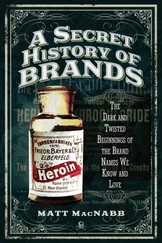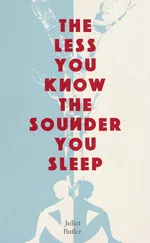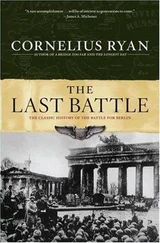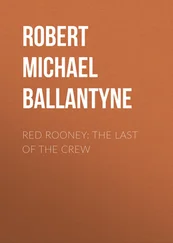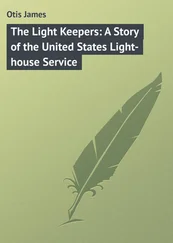* Zafar provided no reference, but I have been able to establish that the remark is attributed to Purkyně by Hans-Lukas Teuber in the rather alarmingly titled volume Visual Field Defects After Penetrating Missile Wounds of the Brain (1960).
* From a given set of axioms, using logical reasoning, mathematicians derive statements that are true. Hilbert believed that mathematics was consistent, i.e., that it is not possible to derive two different statements that contradict each other. That is what Hilbert’s intuition told him, but he did not have a proof.
* I tracked down the letter he was referring to. It is from Pakistani Lieutenant Colonel Sultan Ahmed to Brigadier Hardit Singh Kler of the Indian army:
Dear Brig,
Hope this finds you in high spirits. Your letter asking us to surrender has been received. I want to tell you that the fighting you have seen so far is very little, in fact the fighting has not even started. So let us stop negotiating and start the fight.
40 sorties, I may point out, are inadequate. Ask for many more.
Your point about treating your messenger well was superfluous. It shows how you under-estimate my boys. I hope he liked his tea.
Give my love to the Muktis [Bangladeshi resistance fighters allied with the Indians]. Let me see you with a Sten in your hand next time instead of the pen you seem to have such mastery over,
Now get on and fight.
Yours sincerely
Commander Jamalpur Fortress.
(Lt. Colonel Sultan Ahmed)
Lt. Colonel Sultan Ahmed and his men were overrun shortly after this letter was received.
* Actually, as I understood it, Zafar was developing a practice in banking regulation.
* He was not even a lawyer back then.
* Christianity and Islam share much theologically. They have the same prophets. Jesus occupies an esteemed position, as the Messiah who will return at the end of days — in Islamic theology. But the devil in Islam is a fallen jinn; the jinns were beings of “smokeless flame,” a race of supernatural beings with special powers, distinct from angels, created alongside man but invisible to men. Apparently, the English word genie has common roots with the Arabic jinni , as do the words gene and genius . In Zafar’s notebooks are these lines: What would etymology have looked like to the speakers of Old French, late Middle English, Latin, or Ancient Greek, had there been records to draw on? Would we today still think of European languages as having been born in Europe?
* I came across the following material in Zafar’s notebooks, which, judging by the surrounding matter, was written long before Zafar’s conversation with the colonel. I assume it’s of Zafar’s own composition; there is no attribution. It’s no surprise that behind anything any of us says there may stand a whole catalog of things unsaid. But what I find unsettling about this extract is that it provides a window into how much Zafar restrained himself when he talked, a glimpse at that catalog of things unsaid:
If in 1947 the partition of India created two new nations, the smaller could only have been conceived in the madness of those times, a bird of two wings and no body. And if West Pakistan and East Pakistan were two regions united by a common faith, then they were also two peoples divided by different languages. Even the name of the new nation, the most loyal expression of a people’s language, its label, was an act of exclusion and subordination. The prefabrication of one Choudhary Rahmat Ali: P , Punjab, A , Afghania, K , Kashmir, and the — stan, the annex of land, land of the PAK, with an anaptyxic epenthetic i , don’t you know, just to root the acronym in the land, all of which made a neat little pun, Land of the Pure, the Muslims, while it brought together its constituent peoples. Only it didn’t. Where were the Bengalis? Where was the B ? One thousand miles of India between them. Surely not left out merely because the pun wouldn’t work but never conceived as a piece of the country, a part of the main. Next, in 1948, the West made Urdu the sole official language of the two parts. Imagine that, making Urdu — alien in speech and script — the only official language of the Eastern part, whose people were among the most attached of any to their mother tongue. They rebelled against it, and on February 21, 1952, things came to a head in clashes between the West Pakistani military and students at Dhaka University. Many died. This is even before things fell apart, before the war of liberation in 1971. To this day, Bangladesh marks the date, known as Language Martyrs Day, as a public holiday. In fact, in 2000, UNESCO made that date, February 21, International Mother Language Day. Who noticed? Who cared?
Over the years I have had the same dealing with Pakistani cabdrivers. There I am, riding in a cab in London or New York, and because I am interested in the migrations of cabdrivers, these people, themselves so often migrants, whose job it is to take others from one place to another, I ask the driver where he’s from. Or perhaps I ask because I want the fight. The Pakistani driver answers, and after a quick look in the rearview mirror he asks me the same. From Bangladesh, I say, adding that I spent half my life in the West. We are from the same country! We are brother Muslims! exclaims the Pakistani driver in the last English he thinks he’ll be using with this customer before breaking into Urdu. I have to interrupt him to say that I don’t understand a word of that language, though I do, and I ask him if he speaks Bengali. No, they say, laughing. No, they say with a horrible laugh, as if the idea were ridiculous to all. Why is it that they laugh? Then they’ll tell me that I should learn to speak Urdu. Should you, I retort, speak Bengali? They laugh. You do know, I say, that Bengali is the fifth most commonly spoken language in the world? You do know that wars are fought over language, wars in which millions die? They shut up for the rest of the journey.
At least, this is what I imagine saying.
* In an article in Science magazine in 2000—one of those links emailed to me by my father — the novelist David Foster Wallace writes:
Modern math is like a pyramid, and the broad fundament is often not fun. It is at the higher and apical levels of geometry, topology, analysis, number theory, and mathematical logic that the fun and profundity start, when the calculators and contextless formulae fall away and all that’s left are pencil & paper and what gets called “genius,” viz. the particular blend of reason and ecstatic creativity that characterizes what is best about the human mind. Those who’ve been privileged (or forced) to study it understand that the practice of higher mathematics is, in fact, an “art” and that it depends no less than other arts on inspiration, courage, toil, etc.… but with the added stricture that the “truths” the art of math tries to express are deductive, necessary, a priori truths, capable of both derivation and demonstration by logical proof.
Where Wallace describes mathematics as an “art,” he adds a footnote quoting from a book by the Cambridge mathematician G. H. Hardy (who famously discovered the self-taught Indian mathematical genius Ramanujan). The book, A Mathematician’s Apology , was given to me by Zafar as a present many years ago, on my graduation. It is a moving exploration of the joys and sorrows of mathematics. Quoted by Wallace, Hardy writes:
The mathematician’s patterns, like the painter’s or poet’s, must be beautiful; the ideas, like the colors or the words, must fit together in a harmonious way. Beauty is the first test; there is no permanent place in the world for ugly mathematics.
Читать дальше

